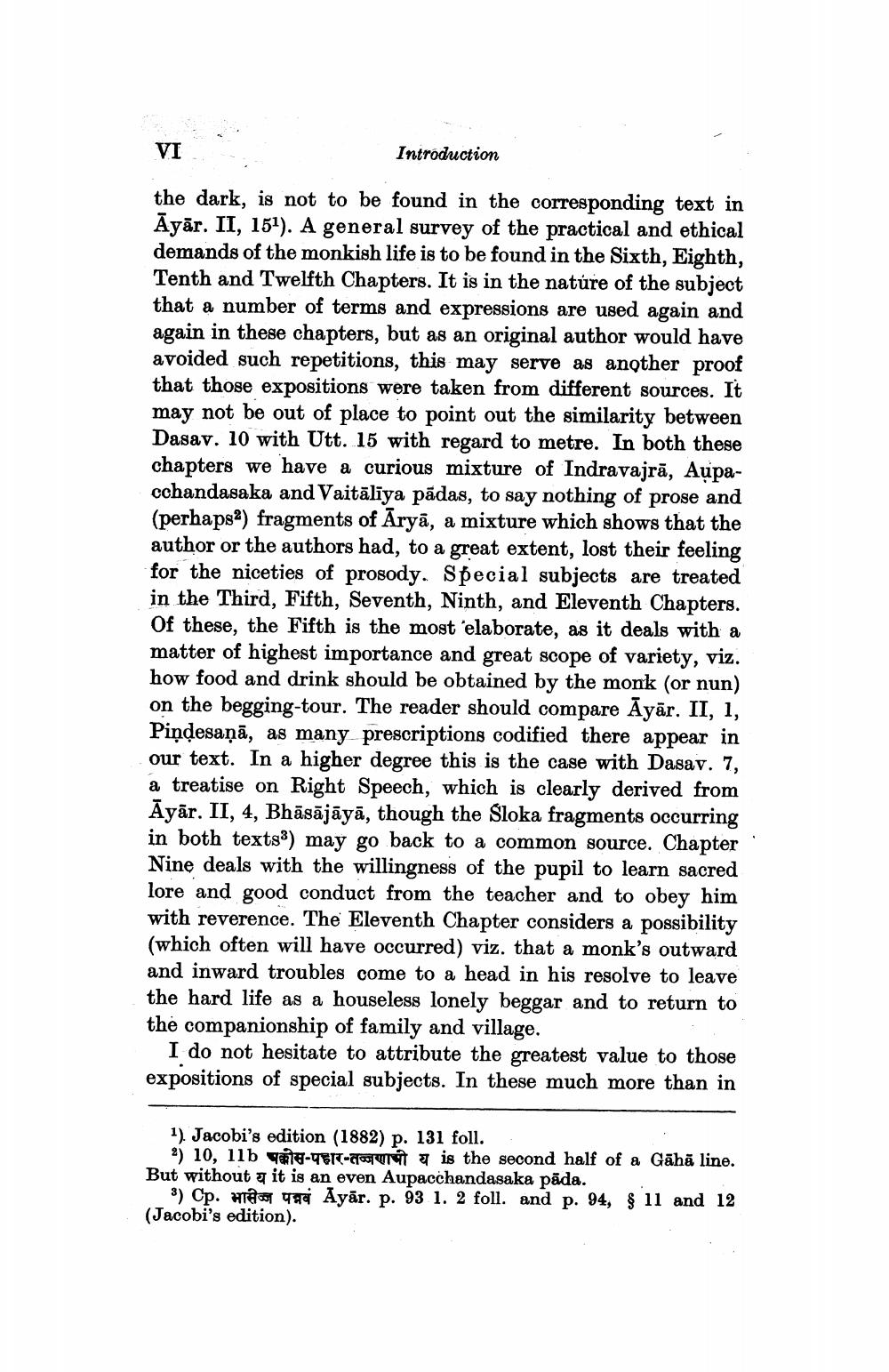Book Title: Dasveyaliya Sutta Author(s): Ernst Leumann, Walther Schubrin Publisher: Anandji Kalyanji Pedhi View full book textPage 7
________________ VI Introduction the dark, is not to be found in the corresponding text in Āyār. II, 151). A general survey of the practical and ethical demands of the monkish life is to be found in the Sixth, Eighth, Tenth and Twelfth Chapters. It is in the nature of the subject that a number of terms and expressions are used again and again in these chapters, but as an original author would have avoided such repetitions, this may serve as another proof that those expositions were taken from different sources. It may not be out of place to point out the similarity between Dasav. 10 with Utt. 15 with regard to metre. In both these chapters we have a curious mixture of Indravajrā, Aupacchandasaka and Vaitālīga pādas, to say nothing of prose and (perhapsa) fragments of Aryā, a mixture which shows that the author or the authors had, to a great extent, lost their feeling for the niceties of prosody. Special subjects are treated in the Third, Fifth, Seventh, Ninth, and Eleventh Chapters. Of these, the Fifth is the most elaborate, as it deals with a matter of highest importance and great scope of variety, viz. how food and drink should be obtained by the monk (or nun) on the begging-tour. The reader should compare Āyör. II, 1, Piņdesaņā, as many prescriptions codified there appear in our text. In a higher degree this is the case with Dasav. 7, a treatise on Right Speech, which is clearly derived from Ayār. II, 4, Bhāsājāyā, though the Sloka fragments occurring in both texts3) may go back to a common source. Chapter Nine deals with the willingness of the pupil to learn sacred lore and good conduct from the teacher and to obey him with reverence. The Eleventh Chapter considers a possibility (which often will have occurred) viz. that a monk's outward and inward troubles come to a head in his resolve to leave the hard life as a houseless lonely beggar and to return to the companionship of family and village. I do not hesitate to attribute the greatest value to those expositions of special subjects. In these much more than in 1) Jacobi's edition (1882) p. 131 foll. 2) 10, 1lb 1-ET-COO is the second half of a Gāhā line. But without y it is an even Aupacchandasaka pāda. 3) Cp. w 40 Ayār. p. 93 1. 2 foll. and p. 94, § 11 and 12 (Jacobi's edition).Page Navigation
1 ... 5 6 7 8 9 10 11 12 13 14 15 16 17 18 19 20 21 22 23 24 25 26 27 28 29 30 31 32 33 34 35 36 37 38 39 40 41 42 43 44 45 46 47 48 49 50 51 52 53 54 55 56 57 58 59 60 61 62 63 64 65 66 67 68 69 70 71 72 ... 142
